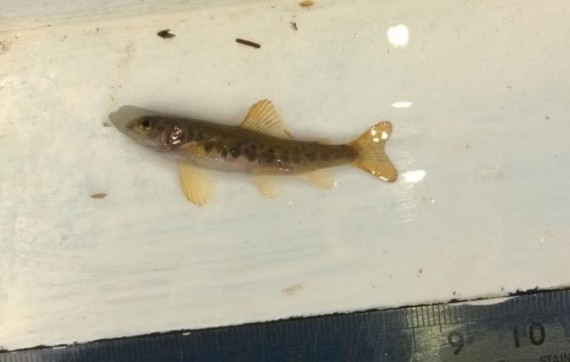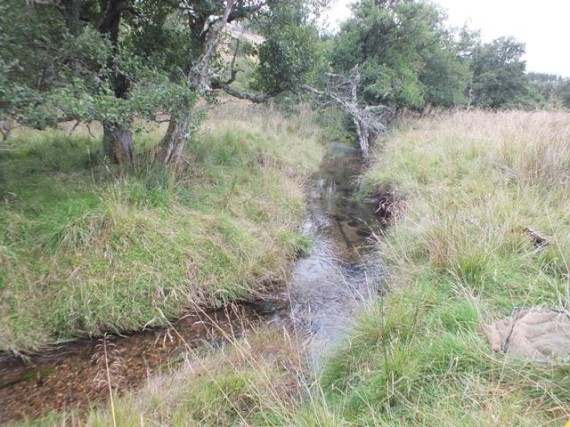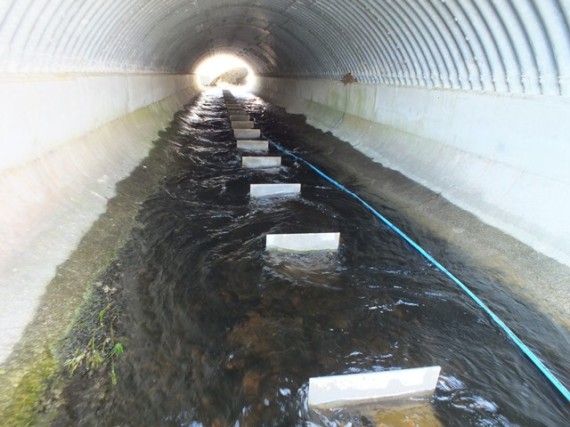In April 2013 I reported on the blog that with the assistance of BEAR Scotland and the SFB team baffles had been fitted in the culvert where the Glenbeg Burn flows under the A95 just to the south of Grantown. The aim was to improve fish access and the proof of the pudding would be the appearance of naturally spawned salmon fry in the burn upstream of the culvert.
Today was the first decent weather on a weekday for at least two weeks. With dropping river levels we took advantage to complete six electrofishing surveys; two in the Dellifure Burn, three in the Glenbeg Burn and one in the Kylintra Burn in Grantown. It was a very interesting and satisfying day although this post concerns the Glenbeg Burn only.
The three survey sites in the Glenbeg Burn were all upstream of the A95 culvert. The uppermost was on the woodland/moor fringe. The habitat here is excellent for salmon fry; shallow and riffly but there were only trout fry and parr present although in good numbers.
The middle site was more typical of the Glenbeg Burn; a deep entrenched channel with pebbly substrate. Previously only trout had been found at this site but amongst the 70 or so trout fry were 6 salmon fry. A nice find and irrefutable evidence that at least two salmon had made it past the baffles last autumn.

One of the naturally spawned salmon fry found in the middle Glenbeg Burn site

The middle site in the Glenbeg Burn. At least one pair of salmon must have made it this far upstream last spawning season
The lower site was a short distance upsteam of the culvert and here again we found salmon fry with a few parr. Scale samples will confirm the age of these parr but some may have been derived from the last stocking in 2012. We found no fry at this site last year but it is not inconceivable that some parr migrated upstream through the baffles.

The steel baffles in the Glenbeg Burn culvert. They have slowed and deepened the flow greatly.
The Glenbeg Burn has been stocked intermittently over a number of years and whilst it is known that they historically spawned well up the burn this is the first time that we have found salmon fry upsteam of the culvert when no stocking had occurred. At the stocking sub-committee it was agreed that it should be stocked again unless there were salmon fry present. However, the evidence from our extensive experience of stocking and monitoring in the Spey burns suggests that encouraging naturally spawning fish is likely to result in a more sustainable population, although of course the spawning fish that produced these fry could have themselves been stocked.
Spey Fishery Board
